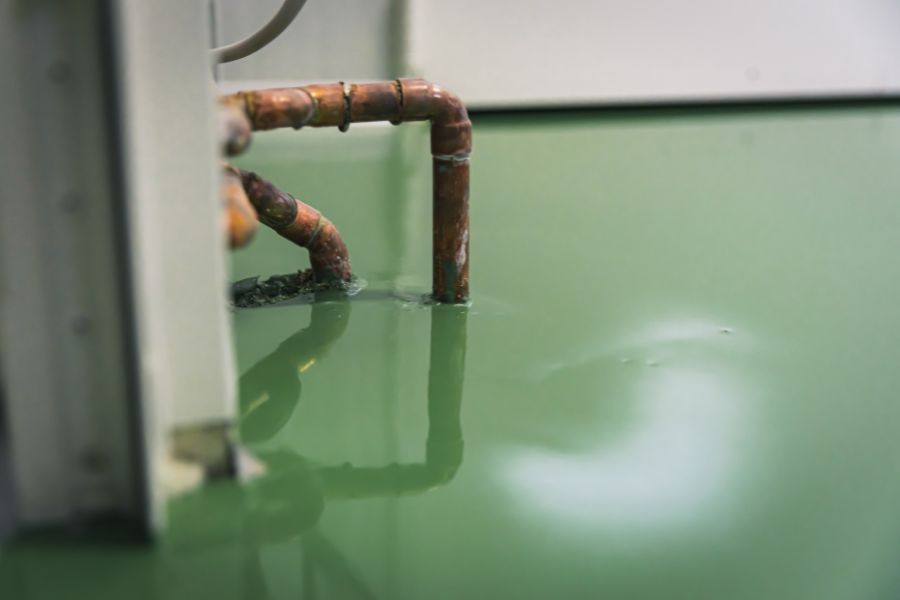Wet basements are a common nuisance faced by homeowners, causing not only inconvenience but potentially leading to significant property damage and health issues. Understanding the science behind wet basements is crucial for effectively addressing and preventing these problems. This blog post delves into the root causes of wet basements, offering insights into the mechanisms of moisture intrusion and foundational water problems.
Understanding the Wet Basement Phenomenon
The Role of Hydrostatic Pressure and Groundwater
At the core of many wet basement issues is the principle of hydrostatic pressure. This pressure is exerted by groundwater surrounding the basement walls and floor, particularly when a basement is built below the local water table. Like placing a glass upside down in a bowl of water, the basement becomes a well, filling with water whenever the water table rises. This pressure can force water through cracks and pores in the foundation, leading to seepage.

Surface Water Intrusion
Another key player in basement moisture is surface water intrusion. This can occur when downspouts discharge roof runoff near the foundation, or when the surrounding soil is improperly graded, directing water towards rather than away from the house. Additionally, homes built at the base of slopes may suffer from water intrusion due to the natural flow of surface water and the potential for spring development near the foundation.
Mechanisms of Moisture Movement
Capillary Action and Porosity
Moisture can infiltrate basements through capillary action, drawing water through the tiny pores present in concrete and masonry. This effect is akin to the way a sponge absorbs and holds water, allowing moisture to wick up through the foundation and into the basement.
Vapor Diffusion
Vapour diffusion is another mechanism by which moisture enters basements. Moist air from the outside can condense on cooler interior surfaces, including basement walls and floors. This phenomenon is particularly noticeable during humid months when the difference in temperature and vapour pressure between the inside and outside drives moisture through the foundation.

Air Movement
The stack effect in homes can exacerbate moisture problems by drawing humid air into the basement through cracks and openings. This air movement not only brings moisture into the basement but can also distribute mould spores and other allergens throughout the home.
Common Symptoms of Wet Basements
Recognizing the signs of a wet basement is the first step in addressing the issue. Symptoms include:
- Water trickling out of walls or pooling on the floor
- Saturated base of concrete block walls
- Damp, humid air and condensation on cold surfaces
- Odour, mould, and mildew growth
- Efflorescence and spalling of concrete or masonry
Root Causes and Solutions
Addressing Hydrostatic Pressure
Mitigating hydrostatic pressure involves ensuring proper waterproofing around the foundation. This can include installing or improving exterior drainage systems, such as footing drains, which collect and redirect water away from the foundation.
Improving Surface Drainage
Correcting surface water problems requires careful landscaping to ensure the ground slopes away from the foundation. Extending downspouts, improving gutter systems, and creating swales can effectively direct water away from the house.
Interior Moisture Control
Managing interior sources of moisture, such as humidifiers, unvented clothes dryers, and cooking activities, is vital. Basement dehumidification can reduce humidity levels, but addressing the source of the moisture is critical for a long-term solution.
Structural Solutions
In some cases, structural solutions may be necessary. This can include sealing cracks in the foundation, installing interior drainage systems like sump pumps, and waterproofing basement walls.

Prevention and Maintenance
The key to preventing wet basement issues lies in regular maintenance and early intervention. This includes comprehensive basement waterproofing, cleaning gutters, inspecting and repairing foundation cracks, and monitoring indoor humidity levels. Additionally, considering landscaping and architectural decisions that minimize water intrusion from the outset can save homeowners from future headaches.
The Takeaway
Understanding the science behind wet basements is the first step toward a dry and healthy home. Whether you’re dealing with minor dampness or significant water intrusion, the root causes are often complex and interconnected. IcyReno specializes in waterproofing and basement underpinning, offering tailored solutions to protect your home from water damage. With a scientific approach to diagnosing and treating wet basements, IcyReno is your partner in creating a dry, comfortable, and safe basement environment.
Wet basements are more than just an annoyance; they’re a signal of underlying issues that can compromise the integrity of your home and the health of your family. By understanding the causes and mechanisms behind basement moisture problems, homeowners can take proactive steps to safeguard their properties. Whether through DIY measures or professional interventions, addressing the root causes of wet basements is essential for maintaining a dry, healthy living space.
